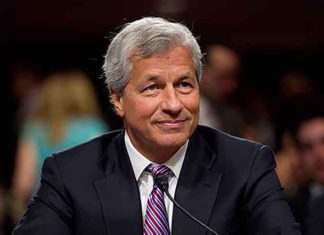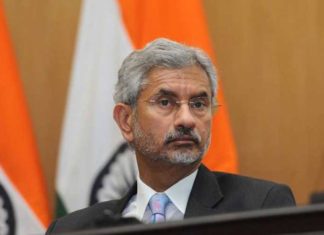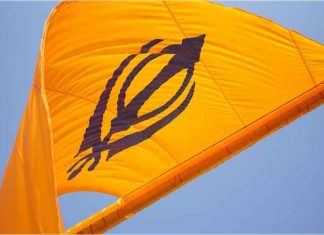New York, Jan 20, 2022 – Air India joined at least nine other international airlines that have modified or cancelled flights to the US amid conflicting reports on what new 5G cell phone services can do to critical airplane technologies.
Carriers are taking a variety of approaches to the spiraling crisis. Air India, Emirates, All Nippon Airways, Japan Airlines, Lufthansa and British Airways have announced changes to some of their flights.
Air India said it would suspend the service between Delhi and San Francisco, Chicago and JFK as well as a Mumbai to Newark flight. It will continue to fly into Washington Dulles.
Both ANA and Japan Airlines said they cancelled some flights scheduled to use Boeing 777 aircraft, but will operate some flights using Boeing 787s instead.
Emirates suspended flights into Boston, Chicago O’Hare, Dallas Fort Worth, George Bush Intercontinental in Houston, Miami, Newark, Orlando, San Francisco and Seattle.A
Emirates continued flying into New York’s John F. Kennedy airport, Los Angeles International and Washington Dulles.
Lufthansa cancelled a flight between Frankfurt and Miami and said it would swap Boeing 747-8 aircraft for 747-400s on flights from Frankfurt to Los Angeles, Chicago and San Francisco.
CNN Business quoted a British Airways spokesman that the airline “had to make a handful of cancellations” because a decision by telecom operators to delay activating the new 5G service at some locations didn’t cover all the airports the airline serves.
Virgin Atlantic and Air France-KLM said they had not cancelled any flights but were monitoring the situation.
Delta Air Lines said it is planning for the possibility of weather-related cancellations as early as Wednesday due to the new 5G service in the vicinity of dozens of US airports.
US air transport regulator, Federal Aviation Administration (FAA), has been concerned that the version of 5G that was scheduled to be switched on could interfere with some airplane instruments. Some aviation industry groups shared those fears. This is despite reassurances from federal telecom regulators and well as wireless carriers.
Specifically, the FAA has been worried that 5G cellular antennas near some airports – not air mobile devices – could throw off readings from some aircraft equipment designed to tell pilots how far they are from the ground.
The systems, radar altimeters, are used throughout a flight and are considered critical. (Radar altimeters differ from standard altimeters, which rely on air pressure readings and do not use radio signals to gauge altitude.)
In December, the FAA had forbidden pilots from using the potentially affected altimeters around airports where low-visibility conditions would otherwise require them.
That new rule could keep planes from getting to some airports in certain circumstances, because pilots would be unable to land using instruments alone.
“We are frustrated by the FAA’s inability to do what nearly 40 countries have done, which is to safely deploy 5G technology without disrupting aviation services, and we urge it to do so in a timely manner,” an AT&T spokesperson said.
Earlier this week, mobile carriers AT&T and Verizon agreed to pause the rollout of the new high-speed 5G wireless service near major airports.
The Biden administration welcomed the halt, saying this “will avoid potentially devastating disruptions to passenger travel, cargo operations, and our economic recovery, while allowing more than 90 per cent of wireless tower deployment to occur as scheduled.”
“While this is a positive development toward preventing widespread disruptions to flight operations, some flight restrictions may remain,” Delta said.
In a Tuesday letter, CEOs from some airlines told the Biden administration to push back the already-delayed rollout.
Airlines estimate 1,000 flight disruptions per day because of possible interference with radar altimeters that pilots use to land in low visibility conditions.
The telecom industry has not commented on the CEOs letter, but has said fears are unfounded since there have not been problems in other countries where 5G is already deployed.
According to a service map by the Federal Communications Commission (FCC), areas in California, Florida, New England, Texas and the midwest will gain 5G coverage. But aviation groups warn that it could jeopardize some of the largest airports, including in Los Angeles, New York and Houston.
The 5G signals will travel over radio frequencies that are collectively known as the C-Band. This band of airwaves is attractive to wireless carriers because it offers a good balance between cellular range and capacity – two key features of any wireless network. (Other sets of airwaves besides the C-Band are also used to carry 5G, but the current debate focuses on just the C-Band frequencies.)
On the spectrum of radio frequencies used for wireless communications, the C-Band sits right next to the band of frequencies used by the aircraft altimeters. The two are intentionally separated by a so-called guard band – essentially “blank” airwaves – to safeguard against interference.
To further address any aircraft risks, Verizon and AT&T have offered in November to limit the power of their 5G antennas and to take other precautionary measures.
But that hasn’t been enough to allay the concerns of the FAA, whose 11th-hour order would have “an enormous negative impact on the aviation industry,” the CEOs of Boeing and Airbus wrote in a letter Monday to the Department of Transportation.
The CEOs added: “We agree that 5G interference could adversely affect the ability of aircraft to safely operate.”
The letter cites an estimate published by the industry group Airlines for America, which predicts the FAA restrictions will disrupt 345,000 passenger flights, 32 million passengers and 5,400 cargo flights. The FAA’s own order estimates that 6,800 US airplanes could be affected by the plan, along with 1,800 helicopters.
Technology experts say that while 5G antennas could theoretically lead to interference around airports, the potential for interference is an ever-present feature of all wireless communications – not just 5G – and that so far regulators around the world have done a good job of handling it. (Agency)





































































